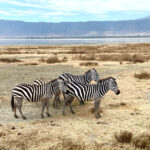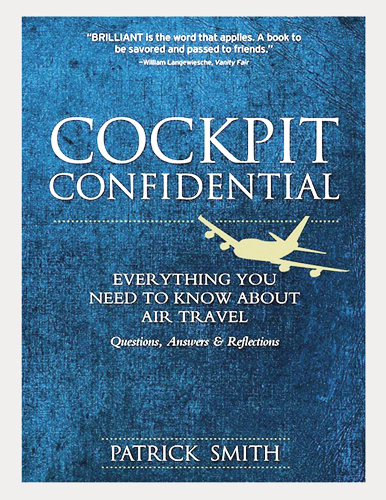Why do between the US & Europe go far north, sometimes over Greenland?
Most people assume this is to remain as close as possible to land in case of an emergency — i.e. keeping close to airports in case a diversion is needed. In fact has nothing to do with emergencies. It’s simply the shortest distance.
Between continents, airplanes follow what are called “great circle” routes, accounting for the earth’s curvature. These routes won’t make sense if you’re looking at a traditional flat map, because when the earth is crushed from its natural round state into a horizontal one, it becomes distorted as the divisions of latitude and longitude stretch apart. (Depending on the layout used — what cartographers call “projection” — the distortion can be grotesque. Kids grow up believing that Greenland is about ten times larger than it really is, thanks to the preposterous polar dimensions of the commonly used Mercator projection.) If you have a globe handy, however, the logic of great circles is very apparent. Measuring with a piece of string, it’s obvious that the shortest distance between New York and Hong Kong, for instance, is not westerly, as it would seem on a map, but pretty much straight north, up into the Arctic, and then straight south. Over the top, in other words.
That’s the extreme, but the principle applies to many long-range pairings, and this is why passengers between America and Europe discover themselves not just high up, but high up — over Newfoundland, Labrador and occasionally into the icy realm of Greenland. Across the Pacific, same idea: a flight from Los Angeles to Beijing will touch the Aleutian Islands and the easternmost portions of Russia.
One night at Kennedy airport I gave what I thought were accurate instructions to a group of Muslims crouched on the floor looking for Mecca. It seemed to me they were facing more toward Bridgeport, Connecticut, so I suggested they adjust their prayer rugs a few southeastward degrees. I should have known better, because the most efficient routing between New York and Mecca is not southeast, but northeast. Required to periodically align themselves with a point thousands of miles away, many Muslims know how this works. To face the holy Kaaba at Mecca, they employ what’s called the Qibla, which is the shortest distance to Mecca from where they’re praying — a kind of Islamic great circle. My friends at Kennedy were searching for their Qibla, only to find quibble instead with an itinerant pilot who was thinking flat when he should’ve been thinking round.
A version of this question, and dozens more, can be found in the new book





